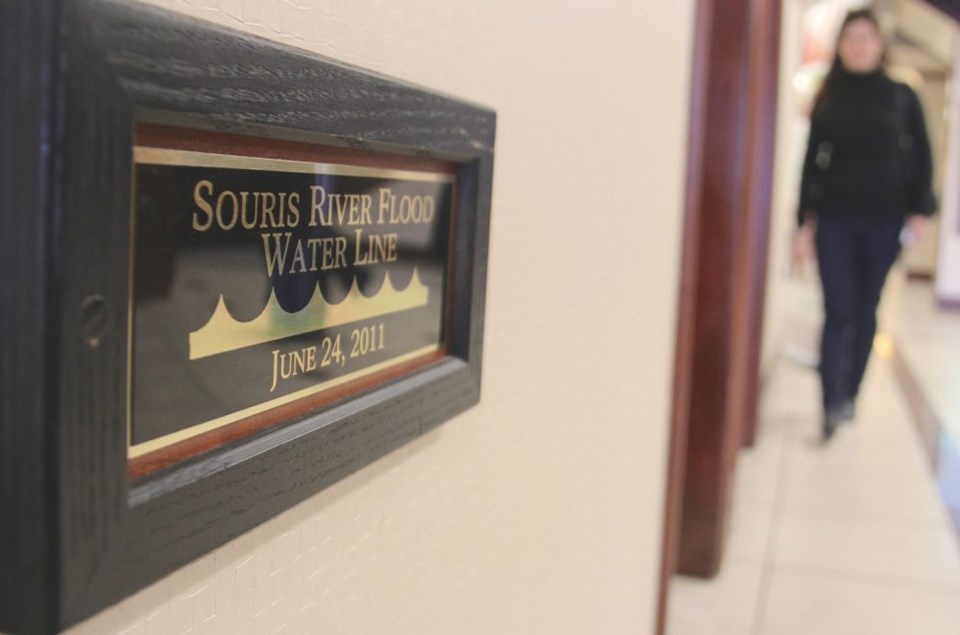An upcoming study will make recommendations on how to reduce flood risks along the Souris River.
That’s the goal of the International Souris River Study Board (ISRSB) which, over the next two years, will look at different options for improving the 1989 international agreement between Canada and the U.S.
Its efforts aim to improve the understanding of flooding in the Souris River basin and recommend measures to reduce the risks it poses, said Jeff Woodward, Regina-based manager of the engineering division with Environment and Climate Change Canada and a Canadian (alternate) co-chair of the ISRSB.
Woodward spoke about the initiative at the Assiniboine River Basin Initiative (ARBI) meeting here Feb. 14.
The 700-km-long Souris River originates in Saskatchewan, passes through North Dakota and crosses into Manitoba before flowing into the Assiniboine River.
This study will look at the Souris River proper as it crosses international boundaries, Woodward said. The recommendations it makes for improvements to the 1989 agreement will go to the International Joint Commission.
There are several components to the study, Woodward said, including trying to better understand river flows in relation to rainfall, snowmelt and evaporation.
Pre-existing moisture conditions play a huge contributing factor along the Souris River, he said.
“Sometimes we could get the equivalent volume of rain or snow on the ground and if the basin is dry we would never see this kind of flow,” he said. “This is a basin that is extremely variable.”
The effort will also examine and propose alternative approaches for flood control and other water uses, ways to improve hydrologic modelling, and improve the wording of the 1989 Operating Plan agreement so it’s clearer and more understandable.
In 2011, water levels along the Souris River reached 2-1/2 to three times beyond the historic range, causing millions of dollars of damage and destruction to homes, farms and businesses in parts of North Dakota, Saskatchewan and Manitoba.
The International Joint Commission established the ISRSB in September 2017 and has given it until February 2020 to complete the study and make recommendations.
Public input sought
A draft work plan for the study is now complete and public input on it will be received until mid-March.
Manitoba municipal leader Debbie McMechan is the Canadian co-chair of a 10-member public advisory group, comprised of equal numbers of Canadians and Americans.
Their job is to engage with landowners and residents about the study and keep people informed about upcoming meetings where public input will be sought.
The ISRSB very much wants the broader public’s input into this, said McMechan, who is also reeve of the Municipality of Two Borders.
“I have been assured that this is a major part of this endeavour,” she said. “They don’t want to produce something that has no real input from folks who live in the basin.”
The advisory group will work with the Assiniboine River Basin Initiative (ARBI) to identify and contact Souris River basin municipalities in Saskatchewan and Manitoba to update them on the study as it progresses as well as let them know of future public meetings, she said.
There’s also a website for public feedback.
An initial open house hosted by the ISRSB was held February 20 in Minot, N.D. to talk about the study’s draft plan.
Comments on the work plan will be received via the website until March 12.
McMechan attended the Minot meeting and said she heard the same issues and concerns raised south of the border as heard throughout affected areas in Saskatchewan and Manitoba.
“I was also struck by their very genuine interest in, when solutions are found, that they’re for everyone, she added.
To sign up for news and updates on the study log on to: ijc.org/en_/isrsb.
Public comments on the draft work plan are being received until March 12 at: participateij.org/sourisriver.




